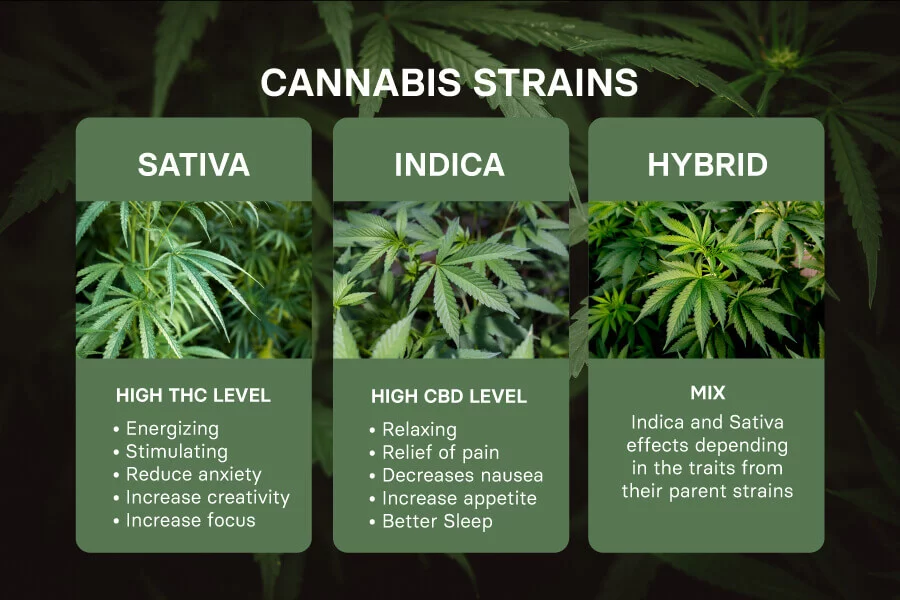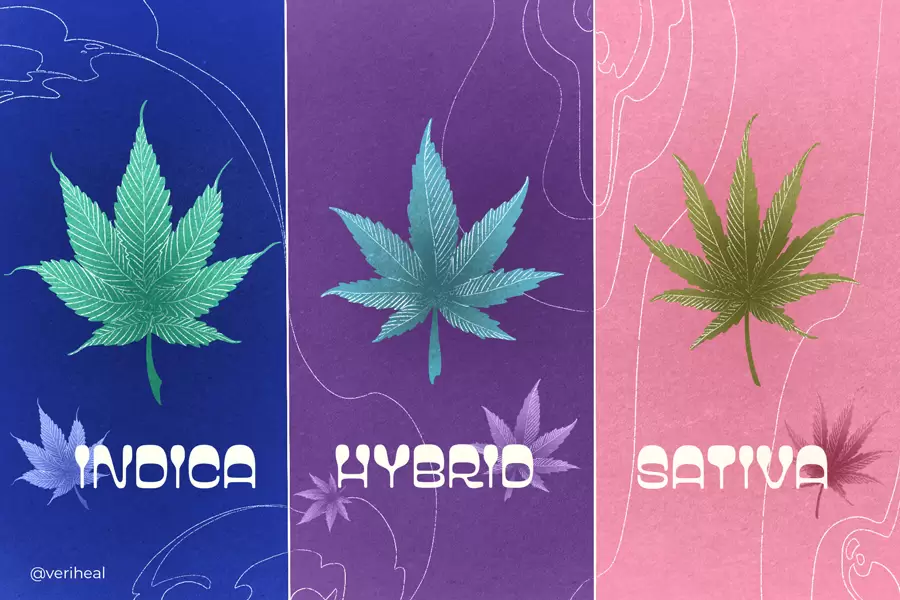Cannabis
Cannabis Showdown: Indica vs. Sativa vs. Hybrid
Introduction
Humans have smoked cannabis for a very long time. It can be challenging to locate pure strains of specific strains due to generations of crossbreeding. As a result, we now classify strains into three categories: hybrid, sativa, and indica. Thus, what are the main distinctions between sativa and indica? A hybrid, what about it? What does all of this mean to you, then?
What Are Indica, Sativa And Hybrid Strains?
To begin with, let’s review the definitions of “sativa,” “indica,” and “hybrid.” Botanists use these terms to categorise various cannabis family plants. Science has identified two species of marijuana, Cannabis Indica and Cannabis Sativa, and has done so since the 18th century. Since the last forty years, there have been numerous crossbreeds, and as a result, neither genetically pure sativa nor indica strains exist anymore. The majority of strains available are hybrids. These days, most people refer to Indica-dominant strains as “Indica” strains, Sativa-dominant hybrid strains as “Sativa,” and strains with relatively balanced mixtures of both as “hybrids.”
Indica
- Origin: Afghanistan, India, Pakistan, and Turkey are the original home of cannabis indica. The Hindu Kush mountains’ frequently severe, arid, and erratic climate has forced the plants to adapt.
- Plant Description: With bushy greenery and chunky, broad-growing leaves, Indica plants are short and stocky. Compared to sativa, they grow faster and yield more buds per plant.
- Typical CBD-To-THC Ratio: Although the THC content of indica strains isn’t always lower, they frequently contain higher levels of CBD.
- Commonly Associated Effects Of Use: For its profoundly calming effects, indica is highly sought after. Additionally, it might lessen pain and nausea while boosting appetite.
- Daytime Or Nighttime Use: Since indica is deeply relaxing, it is usually consumed at night.
- Popular Strains: Similar to sativa, there are also different indica strains.

Hybrid
- Origin: Most hybrids are produced from a cross between sativa and indica plants in greenhouses or on farms.
- Plant Description: The combination of the parent plants determines how hybrid strains look.
- Typical CBD-To-THC Ratio: Although many hybrid cannabis plants are cultivated to boost the percentage of THC, each variety has a different ratio between the two cannabinoids.
- Commonly Associated Effects Of Use:: Producers and farmers choose hybrids because of their distinct qualities. They can alleviate symptoms of radiation or chemotherapy, as well as anxiety and stress.
- Daytime Or Nighttime Use: This depends on the hybrid’s dominant effects.
- Popular Strains: Generally speaking, hybrids can be categorised as balanced, Sativa-dominant (sativa-dom), or Indica-dominant (indica-dom).
Sativa
- Origin: Long, bright days are associated with hot, dry climates where cannabis sativa is most prevalent. These comprise parts of Western Asia, Africa, Central America, and Southeast Asia.
- Plant Description: Sativa plants have thin, tall leaves that resemble fingers. They have a maximum height of two metres (m) or six feet (ft). Compared to certain other strains of cannabis, they take longer to mature.
- Typical CBD-To-THC Ratio: Indica typically has more THC than CBD, while sativa typically has higher THC and lower CBD dosages.
- Commonly Associated Effects Of Use: A “mind high” or an energising, anxiety-reducing effect is frequently produced by sativa.
- Daytime Or Nighttime Use: Sativa is often used during the day due to its stimulating properties.
- Popular Strains: There are several uses for different sativa strains.
Key takeaways
The intended outcome should be considered when choosing a cannabis strain. An Indica strain, for example, will undoubtedly work if you’re looking for pain relief. In contrast, Sativa is the best strain to use if you’re looking for energy and invigorating sparks! By being aware of these differences, you can ensure you receive everything you require for optimal enjoyment!

